When Jono Lineen’s brother died in tragic circumstances, he gave up a comfortable life, moved to the Himalayas and over eight years immersed himself in the cultures of the world’s highest mountains. The experience culminates in his book Into the Heart of the Himalayas, a fascinating memoir that traces his solo trekking odyssey from Pakistan to Nepal across thousands of kilometres of mountain terrain – a route that no-one had ever before attempted to walk. What makes Jono’s story so unique is his unsurpassed access to the region, combined with extensive research into its history and great religions, allowing him to create one of the most complete portraits of the Himalayas ever written. We decided to learn a little more about this intriguing man and his equally compelling journey across the length of the Western Himalayas.
1. What compelled you to embark on a solo trek 2700km from Pakistan to Nepal?
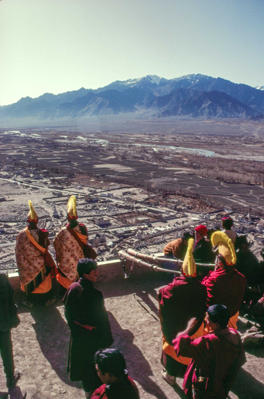 When I was a boy in Belfast I remember flipping through books by Chris Bonnington and Doug Scott in the library, even back then the pictures of the Himalayas drew me in. What was it? Maybe all that bright snow and the verticality of the landscape – the complete inverse to the undulating hills, grey skies and Dickensian architecture of early 1970s Belfast. Maybe it was the light – so vivid almost piercing. Bonnington and Scott and all those Brit. climbers were rock stars back then. I liked where their ‘performances’ took place. I was drawn to those high and wide spaces – for a kid from a province in turmoil they were a place to be free.
When I was a boy in Belfast I remember flipping through books by Chris Bonnington and Doug Scott in the library, even back then the pictures of the Himalayas drew me in. What was it? Maybe all that bright snow and the verticality of the landscape – the complete inverse to the undulating hills, grey skies and Dickensian architecture of early 1970s Belfast. Maybe it was the light – so vivid almost piercing. Bonnington and Scott and all those Brit. climbers were rock stars back then. I liked where their ‘performances’ took place. I was drawn to those high and wide spaces – for a kid from a province in turmoil they were a place to be free.
So I always knew I would travel to the Himalayas and I ended up spending eight years on and off in those amazing mountains. I was a very experienced trekker by the time I decided I should follow in the footsteps of Bonnington and Scott and do something extreme – I decided to walk the length of the Western Himalayas from Pakistan through India to Nepal and connect the three religions and the many cultures of the region. It was a great plan and I knew I was going to write a book about this long walk, but at the time I had no idea it would take me 15 years and I’d have to drag my soul onto the page. But then if we knew how hard so many of the things in life are before we undertook them we’d never give it a go.
2. Name the three most important items in your pack during the trek?
1) Notebooks to record what happened.
2) Maps to give me a rough idea of where I was (although maps in that area along the Pakistan and Indo-Tibetan border are notoriously archaic).
3) Prayer flags. Inside my two-person tunnel tent I had strung up a series of Tibetan prayer flags in such a way that when I pitched the tent the flags were already strung tight across the fabric inside. It was a beautiful flash of color and movement to wake up to every morning and gave the tent a bit of a monastic feel.
3. What was the hairiest moment on your journey?
The hairiest moment on the trek was the day I walked from Wanla to Penjilla along the Yapola River. There had been heavy rains in the days before and the river was running high and wild; the trail at some points was cut directly into the cliffside above the flow. In sections the track was sloughing away, falling into the river and from above rocks were being loosened and careening over the trail. In one section the trail had disappeared and a gaping hole with a view directly down to the rushing river had taken its place. I had to jump the breech, which I did but landed precariously in some soft unstable mud just below the trail. Just then I heard the rifle crack of stones released from farther up the slope. I was stuck with nowhere to go, if I tried to pull myself out of the mud too quickly the slope could destabilize and I’d be pulled into the river. All I could do was press myself tight into the slope and pray the rocks passed me by. A series of stones whizzed by centimeters from my head. I was safe and with shaking knees and a racing heartbeat I pulled myself from the mire and clambered back onto the trail.
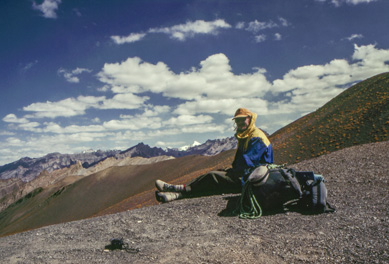 4. What is it about a long trek that can become meditative?
4. What is it about a long trek that can become meditative?
Walking is one of our most fundamental forms of meditation. We humans are designed to walk, we are attuned to understanding the world at four kilometers an hour. As Rousseau said, “Never did I think so much, exist so vividly, and experience so much myself – if I may use that expression – as in journeys I have taken alone and on foot.”
So yes a long trek can become a long meditation. There’s a relationship to religious retreat and pilgrimage – a long walk has nebulous goals, there is a removal from everyday existence for the participant, it has extreme simplicity and it has psychological and physical space. All elements needed to get to the heart of the self.
A long trek can change your life.
5. You finished the trek in 1995 but your book Into the Heart of the Himalayas is only being released just now in April 2014. What took so long?
MMM… now that’s the beauty and the beast of this book. Into the Heart of the Himalayas has been with me for a very long time.
When I finished the trek in 1995 I immediately holed up in a guesthouse in Dharamsala India and over a few months churned out a manuscript from the notes I had taken on the trek. I was very happy with myself – I’d written a book – I let it sit for a few days then went back and read it. It wasn’t very good, actually it was nowhere near good. What I had written was what could be described as a trek procedural, a book that talks about the physical and logistical challenges of undertaking a very long solo walk in the Himalayas. In fact that was the book I had envisioned. In the lead up to the trek I knew I was going to attempt to write a book, but the trek had done something to me – I had had so many unforgettable interactions with people and landscape that what I had written didn’t do justice to what had happened to me in those four months alone in the mountains. This was frustrating, but fortunately I’m not a person who gives up easily.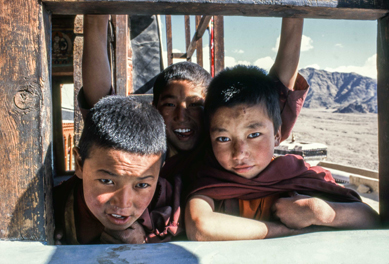
So, over the next twelve months (I was living most of the year in the Himalayas at that point) I pondered what was ‘wrong’ with the book. I approached the question by trying to understand what it was that kept drawing me back to the Himalayas. I spent eight years there, so there was something about the place. In that first bout of introspection I decided it was the landscape and people that attracted me, so I undertook to incorporate those elements into the book. It was another few years of researching and writing and I produced a book that drew in the mountains’ flora, fauna, geology, history, culture and politics. Again I let it sit, then went back and read it. It still wasn’t very good and it still didn’t bring up the wonder and energy of all those incredible interactions I’d had on the trail.
So it was back to the drawing board. This time I thought that what I’d missed was the religious aspect of the Himalayas. It’s a fascinating area because Islam, Buddhism and Hinduism exist in fairly tight confines. So again I went back to the books researching the religions of the region and again integrated those into the text. Another few years and another rewrite. It was getting better but it still didn’t have the sparkling energy I had experienced on the walk.
What was it missing? I wasn’t giving up. This time I went back and considered the combination of landscape and religion, sacred geography. Fortunately I had friends, anthropologists, in the Himalayas who specialized in that and by talking to them I started to piece together what I already knew inside, that the Himalayas are a visionary landscape; a place where for millennia people have journeyed in order to reach a higher state of consciousness. More research, more writing, another few years and another read through. This version was getting close but still it wasn’t there, it still lacked incandescent drive I remembered from the walk.
There was more frustration. I was in Kathmandu those days and a friend said she wanted to read the manuscript. I begrudgingly let her go through it and a few days later we went to dinner. She came with ten pages of notes – on the first page! She had done a thorough reading, but in the end she summed up her critique by saying that there was something going on in the background, an undercurrent to the story that I needed to tap into for the narrative to be complete. I nodded politely but inside I was telling myself that she didn’t know what she was talking about – this was MY book about MY walk through MY Himalayas.
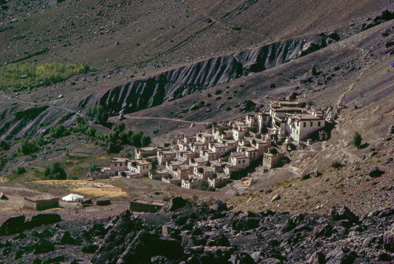 A few days after that dinner I was in my guesthouse room. I had been re-reading a section of the book where I reach the source of the Ganges River. I was meditating on the words, which is part of my usual writing practice. It was such a dramatic time, I was alone, walking to the source of one of the world’s greatest rivers. Sunset was only minutes away and the sky was turning the color of salmon and coral and before me was the glacier that the Ganges emanates from. It’s an incredible scene because it enters the world not as a stream but as a full-fledged river from a wall of turquoise ice. Turquoise and coral are the protective stones that every Tibetan child receives at birth. I was worried I wouldn’t make it to the source before the sun set and so threw my pack off and started running boulder to boulder across the moraine field. I made it to the glacial cave, known as Gaumukh (the cow’s mouth) in Hindi, just as the sun was dropping behind the peaks. I was exhausted and satisfied and I sat down on the dark sand at the source. I slowed my breathing, listened the river and began to sob uncontrollably. I had always attributed that welling of emotion to being at the source of the river that defines Hinduism and India, but all those years later, sitting in my guesthouse in Kathmandu a sense of déjà-vu rolled over me. When had I experienced that same sunset half-light, immense quietude and still coolness – in a flash of recognition it hit me, the last time I’d had the conflux of those three elements was when I’d seen my brother’s dead body in a hospital morgue in Canada. Fireworks went off – WHY had I really pushed myself to trek 2700 kilometers alone through the Himalayas and why had I spent 15 years writing a book about that event – the reason I finally understood was that the trek and the very long, obsessive process of writing the book was actually about my coming to terms with the death of my brother. In an intense three month blur of editing and writing I reworked the book again and finally I had a manuscript that sang from the same source as the trek I had undertaken so many years before.
A few days after that dinner I was in my guesthouse room. I had been re-reading a section of the book where I reach the source of the Ganges River. I was meditating on the words, which is part of my usual writing practice. It was such a dramatic time, I was alone, walking to the source of one of the world’s greatest rivers. Sunset was only minutes away and the sky was turning the color of salmon and coral and before me was the glacier that the Ganges emanates from. It’s an incredible scene because it enters the world not as a stream but as a full-fledged river from a wall of turquoise ice. Turquoise and coral are the protective stones that every Tibetan child receives at birth. I was worried I wouldn’t make it to the source before the sun set and so threw my pack off and started running boulder to boulder across the moraine field. I made it to the glacial cave, known as Gaumukh (the cow’s mouth) in Hindi, just as the sun was dropping behind the peaks. I was exhausted and satisfied and I sat down on the dark sand at the source. I slowed my breathing, listened the river and began to sob uncontrollably. I had always attributed that welling of emotion to being at the source of the river that defines Hinduism and India, but all those years later, sitting in my guesthouse in Kathmandu a sense of déjà-vu rolled over me. When had I experienced that same sunset half-light, immense quietude and still coolness – in a flash of recognition it hit me, the last time I’d had the conflux of those three elements was when I’d seen my brother’s dead body in a hospital morgue in Canada. Fireworks went off – WHY had I really pushed myself to trek 2700 kilometers alone through the Himalayas and why had I spent 15 years writing a book about that event – the reason I finally understood was that the trek and the very long, obsessive process of writing the book was actually about my coming to terms with the death of my brother. In an intense three month blur of editing and writing I reworked the book again and finally I had a manuscript that sang from the same source as the trek I had undertaken so many years before.
So yes – it’s been a long a twisted road to bring this book to life but I know that the book before me now is the one I was meant to write and the blessing of it is that through the 15 years of research and writing I’ve been able to create one of the most complete portraits of the Himalayas ever written.
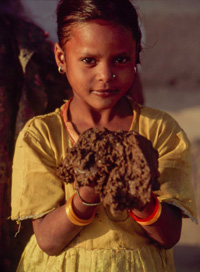 6. What book(s) are you reading at the moment?
6. What book(s) are you reading at the moment?
For work – Joan Beaumont’s magisterial Broken Nation.
For research for my next book – Tuen Voeten’s, How de Body – about his time in the Sierra Leonean civil war in the early 2000s (a time when I was also there).
For pleasure – Richard House, The Kills.
7. Where would be your #1 spot to pitch a tent in the Western Himalaya?
Whow – almost too many to list!
- Gaumukh, the source of the Ganges
- Around Tabo, the best preserved Tibetan Gompa possibly in the world
- Chandra Tal in Spiti
- Almost anywhere in Zanskar
- The Upper Sangla Valley
8. What is your advice to travellers looking at trekking in the Himalaya?
Use local knowledge. If you don’t have much time I would recommend going with a trekking outfit (yes World Expeditions is excellent) as they tap into the best of local population. If you do have time (and I’m talking months here) then I would recommend talking and listening to the locals and learning some of the local language before you set off.